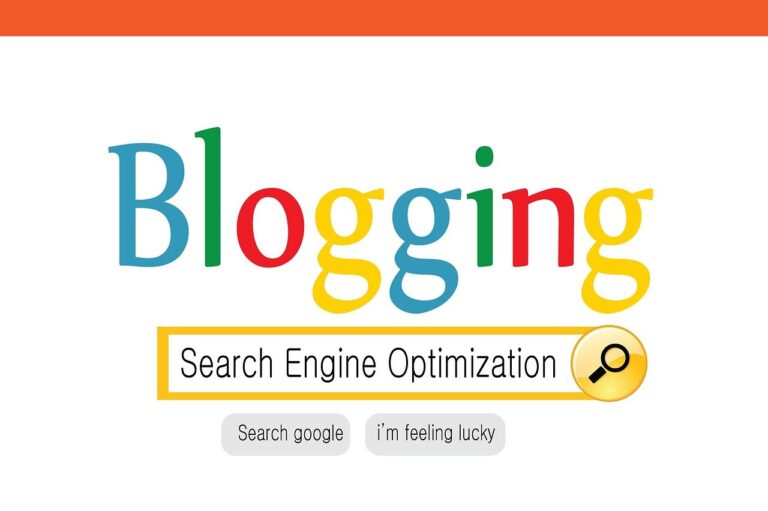Privacy Policy
MK6 Enterprises, LLC ( Company, we, or us )
respects Your privacy and is committed to protecting it through this Privacy
Policy.
This Privacy Policy governs Your access to and use of https://www.holistichealthblogger.com/ or its subdomains, including any content,
functionality and services offered on or through https://www.holistichealthblogger.com/ (the "Website"), whether as a guest or a
registered user.
When accessing the Website, the Company will learn certain
information about You, both automatically and through voluntary actions You may
take, during Your visit. This policy applies to information we collect on the
Website and in email, text, or other electronic messages between You and the
Website.
Please read the Privacy Policy carefully before You start
to use the Website.
By using the Website or by clicking to accept or agree to
the Terms of Use when this option is made available to You and You accept and
agree to be bound and abide by the Privacy Policy. If You do not want to agree
to the Privacy Policy, You must not access or use the
Website.
Types of Information We Collect About You
When You access the Website, the Company will learn certain information about
You during Your visit.
Information You Provide To Us. The Website provides various places for users to
provide information. We collect information that users provide by filling out
forms on the Website, communicating with us via contact forms, responding to
surveys, running queries on our search feature, providing comments or other
feedback, and providing information when ordering a product or service via the
Website.
We use the information You provide to communicate with You,
deliver the requested product and/or service, improve our overall site
performance, and provide You with offers, promotions, and information.
Information We Collect Through Automatic Data Collection Technology. As You navigate our Website, we
use automatic data collection technologies such as cookies, pixels, server
logs, and analytics software to collect certain information about Your
equipment, browsing actions, and patterns. This will generally include
information about Your location, traffic patterns through our website, and any
communications between Your computer and our Website.
Among other things, we will collect data about the type of computer You use,
Your Internet connection, Your IP address, Your operating system, and Your
browser type.
The information we collect automatically is used for
statistical data and to improve our Website and
service offerings. To the extent that You voluntarily provide personal
information to us, our systems will associate the automatically collected
information with Your personal information.
Children Under The Age Of 13
Our Website is not intended for children under 13 years of age. No one under
the age of 13 may provide any information to or on the Website. We do not
knowingly collect personal information from children under 13. If You are under
13, do not use or provide any information on this Website or on or through any
of its features, register on the Website, make any purchases through the
Website, use any of the interactive or public comment features of this Website,
or provide any information about Yourself to us, including Your name, address,
telephone number, email address, or any screen name or user name You may use.
If we learn we have collected or received personal
information from a child under 13 without verification of parental consent, we
will delete that information. If You believe we might have any information from
or about a child under 13, please contact us at drkelley@holistichealthblogger.com.
Third-Party Use Of Cookies
Some content or applications, including advertisements, on the Website are
served by third parties, including advertisers, ad networks and servers,
content providers, and application providers. When You use our website, these
third parties may use cookies alone or with web beacons or other tracking
technologies to collect information about You. The information they collect may
be associated with Your personal information, or they may collect information,
including personal information, about Your online activities over time and
across different websites and other online services. They may use this
information to provide You with interest-based (behavioral) advertising or
other targeted content.
We do not control these third-party tracking technologies
or how they may be used. You should contact the responsible provider directly
if You have any questions about an advertisement or other targeted content.
Email Information & Policies
If You choose to correspond with us through email, we may retain the content of
Your email messages, Your email address, and our responses. We provide the same
protections for these electronic communications we employ to maintain
information received online, by mail, and by telephone. This also applies when
You register for our website, sign up through any of our forms using Your email
address or make a purchase on this site.
We are committed to keeping Your email address
confidential. We do not sell, rent, or lease our subscription lists to third
parties and will not disclose Your email address to any third parties except as
allowed in the Disclosure of Your Information section.
We will maintain the information You send via email in
accordance with applicable federal law.
In compliance with the CAN-SPAM Act, all emails sent from our organization will clearly state who the email is
from and provide clear information on contacting the sender. In addition, all
email messages will also contain concise information on removing Yourself from
our mailing list so that You receive no further email communication from us.
Our emails allow users to opt out of receiving
communications from our partners and us by following the unsubscribe
instructions at the bottom of any email they receive from us at any time.
Users who no longer wish to receive our newsletter or
promotional materials may opt out of receiving these communications by clicking
on the unsubscribe link in the email.
Use of Cookies And Pixels
Like other commercial websites, our website utilizes a standard technology
called cookies and server logs to collect information about our site's use.
Information gathered through cookies and server logs may include the date and
time of visits, the pages viewed, time spent at our site, the websites visited
just before and after our own, and Your IP address.
A cookie is a very small text document, often including an
anonymous unique identifier. When You visit a website, that site s computer
asks Your computer for permission to store this file in a part of Your hard
drive specifically designated for cookies. Each website can send its own cookie
to Your browser if Your browser s preferences allow it, but (to protect Your
privacy) Your browser only permits a website to access the cookies it has
already sent to You, not the cookies sent to You by other sites.
The Company reserves the right to use technological
equivalents of cookies, including social media pixels. These pixels allow
social media sites to track visitors to outside websites to tailor advertising
messages users see while visiting that social media website. The Company
reserves the right to use these pixels in compliance with the policies of the
various social media sites.
For the most comprehensive, technical, and current
explanation of our cookie policy, please see the Website banner powered by
Cookie Script.
Why We Collect Information
The Company collects Your information to record and support Your participation
in Your selected activities. We collect Your information if You register to
download a book or resource, sign up for our newsletter, and/or purchase a
product from us. We use this information to track Your preferences and to keep
You informed about the products and services You have selected to receive and
any related products and/or services. As a visitor to this Website, You can engage in most activities without providing any
personal information.
If You opt to receive any free resources, participate in
any free training programs, register for a webinar, register for a live event,
register for a seminar, or purchase any products sold by the Company on this
Website, we may automatically enroll you to receive our free email newsletter.
You can unsubscribe anytime if You do not wish to receive this newsletter. We
include an unsubscribe link at the bottom of every email. If You ever have
trouble unsubscribing, You can email drkelley@holistichealthblogger.com requesting
to unsubscribe from future emails.
How We Use the Information That You Provide to Us
We use personal information for purposes of presenting our Website and its
contents to You, providing You with information, providing You with offers for
products and services, providing You with information about Your subscriptions
and products, carrying out any contract between You and the Company,
administering our business activities, providing customer service, and making
available other items and services to our customers and prospective customers.
From time to time, we may use the information You provide
to make You offers to purchase products and services provided by third parties
in exchange for a commission to be paid to us by such third parties. If You opt
to participate in such promotions, the third parties will receive Your
information.
From time to time, we may use the information You provide
to us to display advertisements to You that are tailored to Your personal
characteristics, interests, and activities.
How We Protect Your Information and Secure Information Transmissions
We employ commercially reasonable methods to ensure the security of the
information You provide and the information we collect automatically. This
includes using standard security protocols and working only with reputable
third-party vendors.
Email is not recognized as a secure medium of
communication. For this reason, we request that You do not send private
information to us by email. However, doing so is allowed, but at Your own risk.
Some of the information You enter on our website may be transmitted securely
via a secure medium known as Secure Sockets Layer or SSL. Credit Card and other
sensitive information is never transmitted via email.
The Company may use software programs to create summary
statistics, which are used for such purposes as assessing the number of
visitors to the different sections of our site, what information is of most and
least interest, determining technical design specifications, and identifying
system performance or problem areas.
For site security purposes and to ensure that this service
remains available to all users, the Company uses software programs to monitor
network traffic and identify unauthorized attempts to upload or change
information or otherwise cause damage.
Visitors Rights
As a user of this site, You are entitled to certain
information and may make certain requests of the Company. Those rights include:
We will retain any information You choose to provide to us
until the earlier of (a) Your asking us to delete the
information, (b) our decision to cease using our existing data providers, or
(c) the Company decides that the costs of retaining it outweigh the value in
retaining the data.
You have the right to request access to the data the
Company stores about You.
You have the right to rectify any mistakes in the personal
data the Company stores about You.
You have the right to request the erasure of Your personal
data.
You have the right to seek restrictions on the processing
of Your data.
You have the right to object to the processing of Your data
and the right to the portability of Your data.
To the extent You provided consent to the Company s processing of Your personal
data, You have the right to withdraw that consent at
any time without affecting the lawfulness of processing based upon consent that
occurred before Your withdrawal of consent.
You have the right to complain to a supervisory authority
with jurisdiction over data processing and protection issues.
We require only the information that is reasonably required
to enter into a contract with You. We will not require
You to consent to any unnecessary processing as a condition of entering into a contract with us.
Disclosure of Your Information
As a general rule, we do not sell, rent, lease, or otherwise transfer any
information collected from You.
We may disclose Your personal information to our subsidiaries, affiliates, and
service providers to provide our services to You.
We may disclose Your personal information to a third party,
including a lawyer, our payment processor, or collection agency, to enforce our
terms of service or any other agreement between You and the Company.
We may provide Your information to any successor in
interest in the event of a merger, divestiture, restructuring, reorganization,
dissolution, or other sale or transfer of some or all of
the Company s assets and/or business.
We may disclose information when legally compelled to do
so, in other words, when we, in good faith, believe that the law requires it or
for the protection of our legal rights or when compelled by a court or other
governmental entity to do so.
Policy Changes
Our policy is to post any changes we make to our privacy policy on this page.
If we make material changes to how we treat our users' personal information, we
will notify You by email to the email address specified in Your account and/or
through a notice on the Website home page. The date the privacy policy was last
revised is identified at the bottom of the page. You are responsible for
ensuring we have an up-to-date active, and deliverable email address for You
and for periodically visiting our Website and this
privacy policy to check for any changes.
Do Not Track Requests
Certain internet browsers allow users to send Do Not Track requests to sites
they visit. Unfortunately, there is no industry or legal standard (or easy
technological solution) to handle these responses. Thus, we don t currently
honor Do Not Track signals.
Contact Us
The Company welcomes Your questions or comments:
MK6 Enterprises, LLC
4125 Park St. N.
#433 Saint Petersburg, FL 33709
Email Address: drkelley@holistichealthblogger.com
Last edited Jan 1, 2025.











